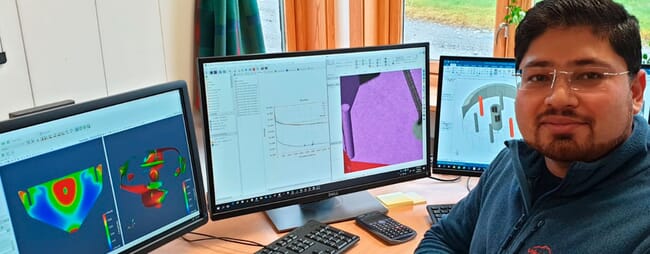At the CtrlAQUA research centre, Khurram Shahzad is currently investigating how water currents behave in small and large tanks, and how to improve them through computational fluid dynamics and simulations.

© Andre Merian, Nofima.
The models should improve fish welfare, as well as eliminate the need to make prototypes of tanks and carry out costly experiments.
“The main purpose of my calculations is to help the industry develop optimal fish farming tanks that provide the fish with adequate swimming conditions and ensure that oxygen and feed are distributed evenly in order to avoid ‘dead zones’,” he explains.
“If done right, the tanks will also be largely self-cleaning. Facilitating the right hydrodynamics will reduce energy consumption and improve salmon welfare in land-based farming,” he adds.
Many different sizes and types of tanks are available – including circular and octagonal designs, as well as raceways with steadily flowing water.
“We collaborate extensively with the industry. They send us examples of existing tanks or drafts with new ideas which they are working on. In return we create a computer model and simulate the proposed designs. Later we carry out tests by adjusting the various parameters including inlet and outlet speed and placements at different depths, inlet directional angles and the direction and number of nozzles on each inlet,” he says.


